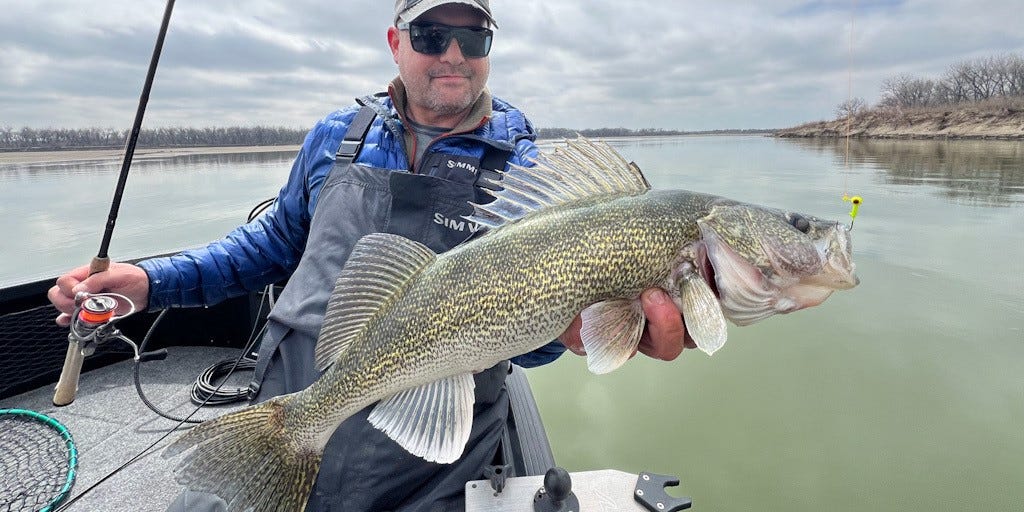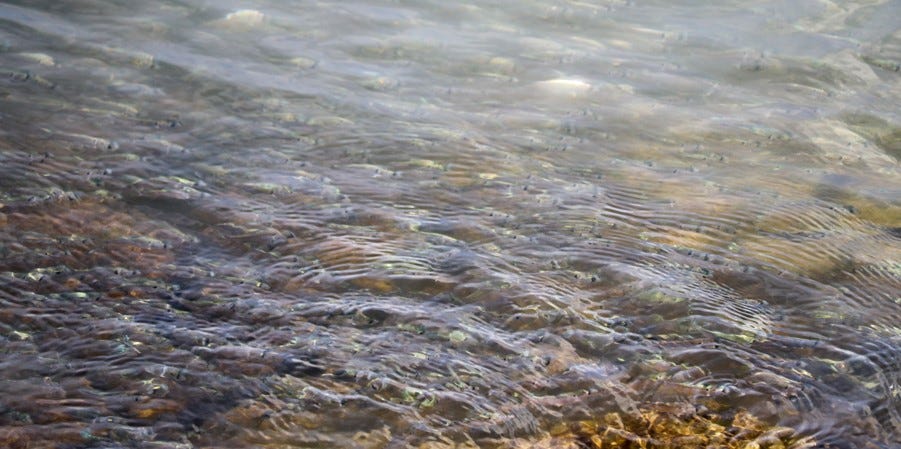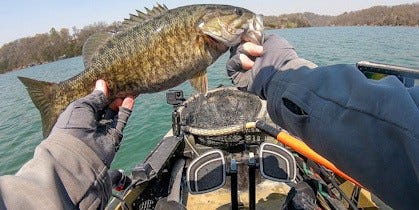- May 15, 2025
How to Catch Crappie from Docks
Docks serve double duty as habitat for crappie and structures for anglers to fish from, which puts the fish within easy reach. Let’s explore how to get the most out of this great crappie-catching opportunity.
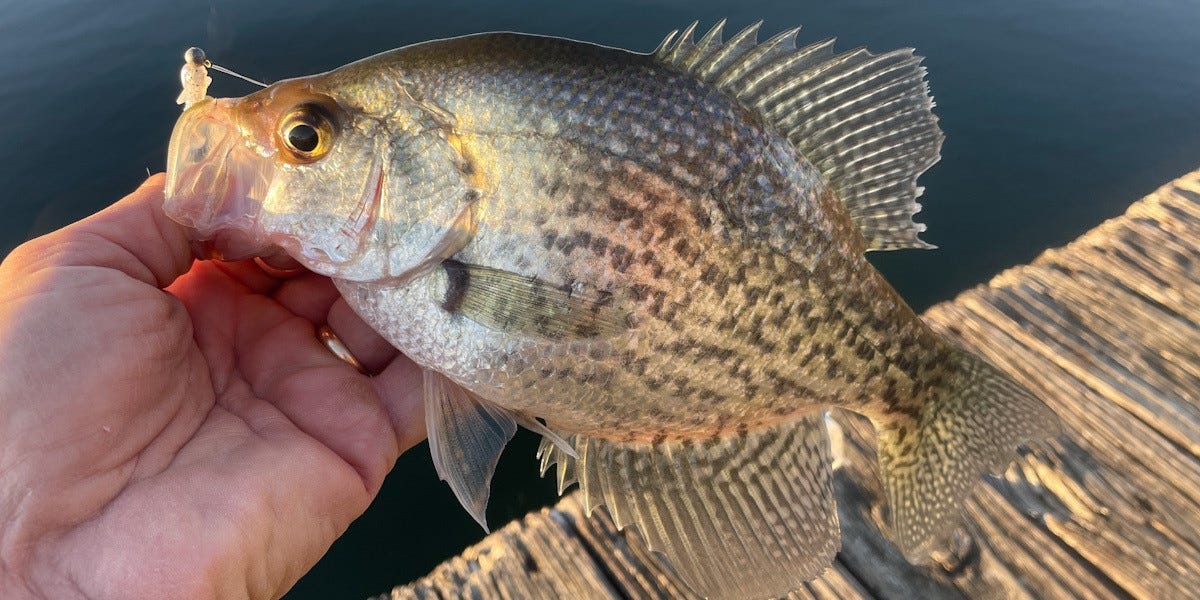

Crappie anglers fishing from boats spend a lot of time fishing near docks, and many have refined strategies for working these structures efficiently. Sometimes overlooked is the fact that the same structure provide platforms for good fishing access without the aid of a boat and that fishing from a dock commonly affords efficient, targeted presentations, tight to the structure.
Because docks provide habitat for crappie and their forage, along with offering all-day shade, many docks provide good fishing opportunities through much of the year. If a dock near you provides access to crappie fishing – whether it’s your own dock, a friend’s dock, a marina dock that allows paid fishing access or a public dock built with anglers in mind – these tips can help you get the most from every opportunity.
Finding Fish Around Docks
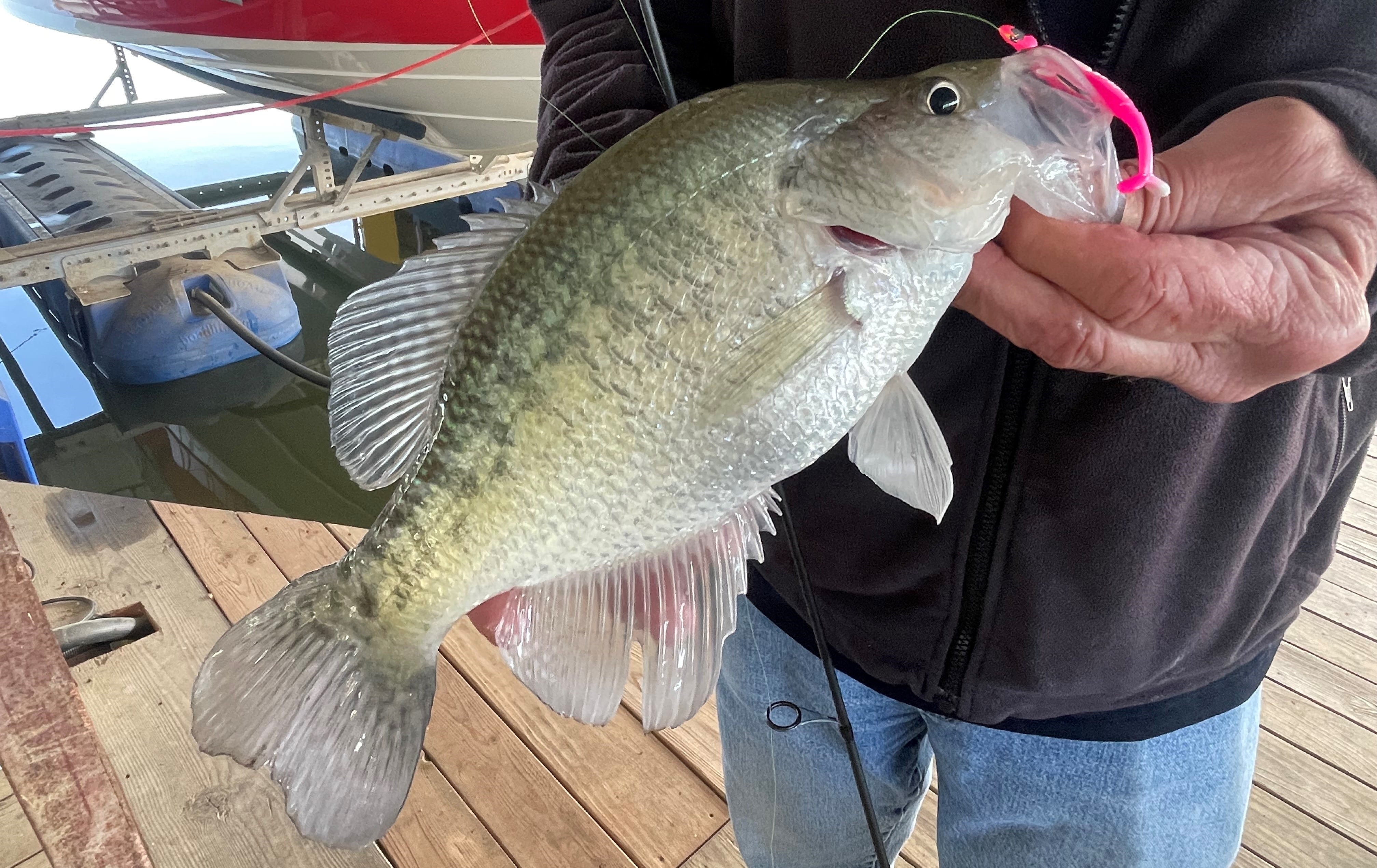

Crappie can be anywhere around a dock, any given day, but all dock spots are not created equal. Don’t just pick a place, set up shop, and fish. Consider a dock’s variables and how the fish are most likely to be positioned and incorporate strategic searching and patterning into your dock fishing plan.
Bottom depth changes, a dock’s support structures, brush or other cover, baitfish, docked boats, shade, current and current breaks are some of the factors that impact the positioning of the fish. Crappie are cover-oriented fish, so the dock’s support system, boats and any brush sunk near a dock are often primary guiding factors. The key is to figure out which dock posts or brushpiles are holding fish and the crappie’s preferred depth. This is where factors like bottom depth, current breaks, visible minnow schools and the side where the shade extends the farthest come into play.
Consider first how factors should affect fish positioning and begin your pursuit with that in mind. Search and experiment, though, trying different spots and working various levels of the water column. Pay careful attention to where you get bit and note common denominators.
Key areas that always warrant attention, if available, are inside dock corners, where shade extends in two directions with cover in-between, bottom depth breaks, dock ends and brushpiles that are in easy reach but not quite under a dock and therefore overlooked by other anglers.
Jigs & Rigs
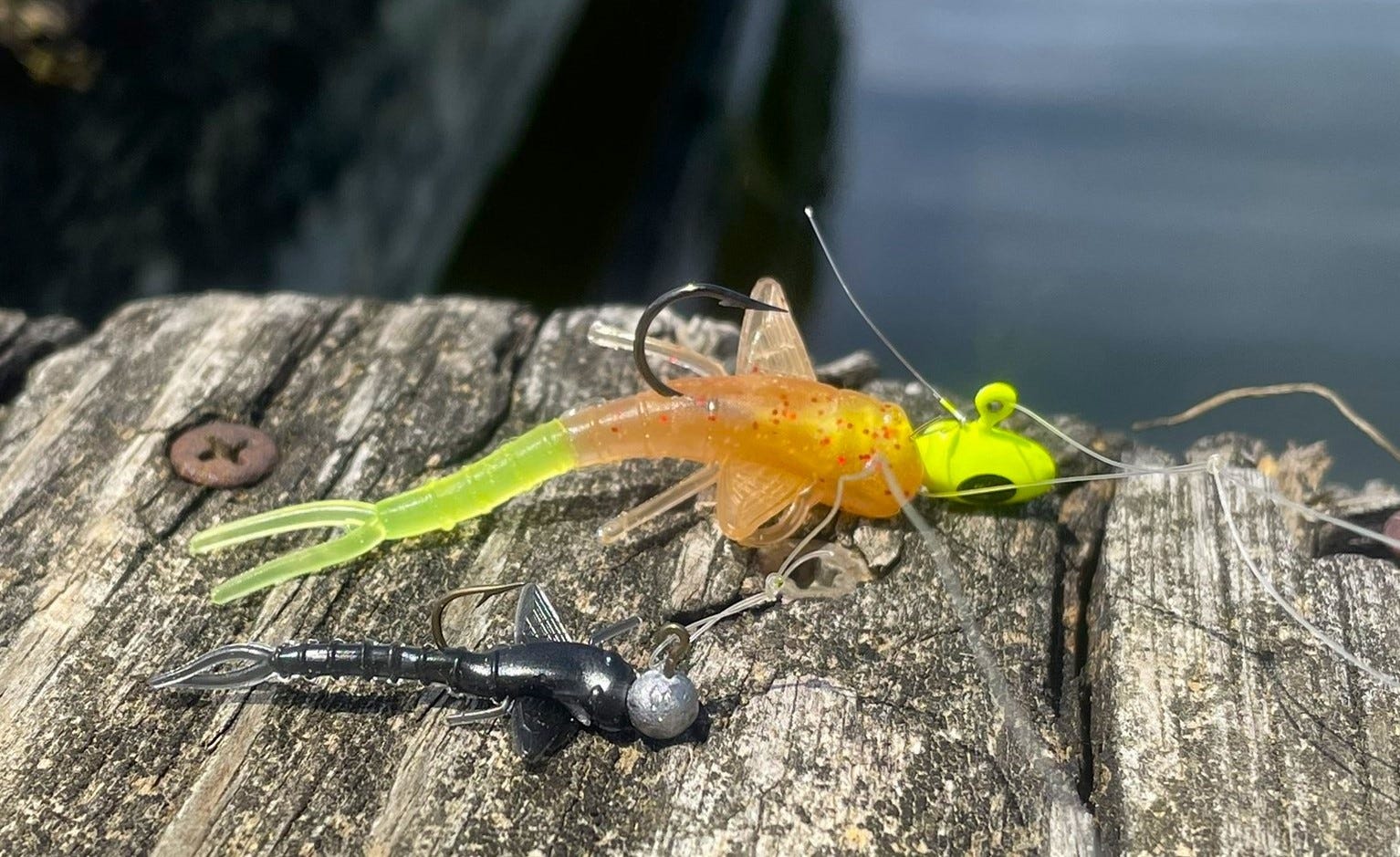

Small jigs, including jigheads matched with soft plastic bodies and hair or feather jigs, are the mainstay lures for crappie fishing from docks. Tiny spoons, which are fished the same ways as the jigs, have also gotten a fair amount of use in recent years.
Tandem rigs, comprised of two jigs tied a foot and a half or so apart, provide significant advantages for many dock fishing situations. Beyond simply doubling the number of baits in the water, a tandem rig facilitates faster patterning by letting you fish different colors or jig styles at the same time and allows you to work slightly different zones with vertical presentations. Tandem rigs also make it easier to manage extra small offerings because they increase the total amount of weight.
That said, a tandem rig is more apt to get hung than a single jig, so a single jig might be a better option if a dock has a lot of brush beside it. In addition, on occasion, fish seemed to be spooked by a pair of jigs and simply respond better to a single jig.
The best jig size can vary based on depth, water color and the aggressiveness of the fish, but a 1/16-ounce head and a body that’s around 2 inches long tends to work well. Fishing one jig of this size with a micro jig behind it works wonderfully some days for appealing to fish in different moods.
Crappie Presentations
One of the best things about fishing from a dock is that you can set up close to the crappie, at times with the rod tip directly above the strike zone, without spooking the fish. This allows for precise control of the bait’s location and movements. Vertical and horizontal presentations each have virtues, and some days the crappie clearly favor one or the other. A few basic presentation types cover most situations and collectively can help you find fish and pattern them.
A true vertical approach allows for the most precise placement. Lower your jig or spoon with the rod tip right next to a dock support or over a brush pile. Let the bait suspend. Live sonar has confirmed what crappie veterans have long contended. Less is more in terms of jig movement. Sharp jigging usually spooks crappie. Hold the rod tip still or work the bait gently, tapping the rod, jiggling the rod tip or slowly and steadily lifting the bait. Experiment with motions and depths.
At times, the bait needs to be moving horizontally to trigger strikes. This is easily achieved by pitching parallel to the dock’s edge and either allowing the bait to pendulum down or allowing it to sink initially and then reeling slowly. For either, slight lifts or jiggles sometimes trigger strikes. At other times, slow and steady works best.
Between the vertical and horizontal approaches is a presentation that’s akin to slow trolling and that can be highly effective for locating fish. For this technique, begin by suspending the bait straight down, like the vertical approach, and then simply walk slowly, keeping the rod tip the same distance from the water. Again, experiment with depths and speed and whether you add action with the rod as you walk.
Many successful days involve versions of all three techniques, and many individual presentations hybridize more than one.
5 Great Dock Fishing Baits
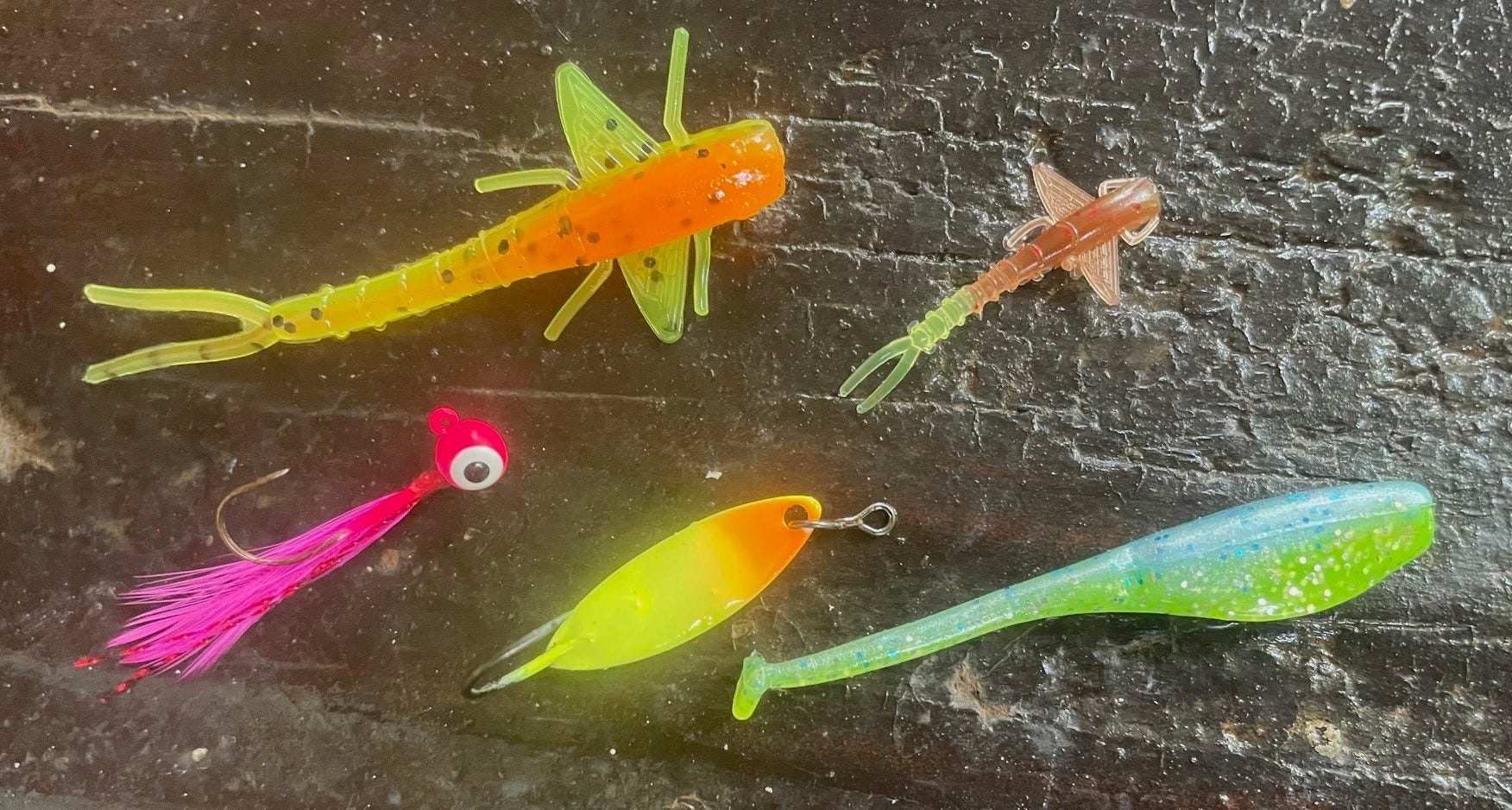

- Bobby Garland Mayfly – Mayflies and other insects commonly use dock structures and are important forage for crappie and other gamefish. Beyond bugs, though, the Garland Mayfly can be used to effectively imitate a minnow or other baitfish and is simply enticing to fish.
- Bobby Garland Itty Bit Mayfly – The 3/4-inch Itty Bit version of the Bobby Garland Mayfly provides the perfect answer when the crappie turn fussy and when they are keying on extra small forage, and a Mayfly/Itty Bit Mayfly makes a great tandem rig.
- Lindy B-MAX Little Nipper – A slender feather jig that moves in the water with a subtle but nearly constant quiver, the Little Nipper comes in 1/16-, 1/32- and 1/64-ounce sizes and eight colors.
- Great Lakes Finesse Taco Spoon – Developed for ice fishing, the Taco Spoon is sized right for crappie and offers an enticing action whether moved vertically, similar to ice presentations, or swam horizontally.
- Bobby Garland Baby Shad Swim’R – The Swim’R has the enticing profile and wavering action of the Original Baby Shad, but a jointed tail and swim foot provide extra kick for swimming presentations.

